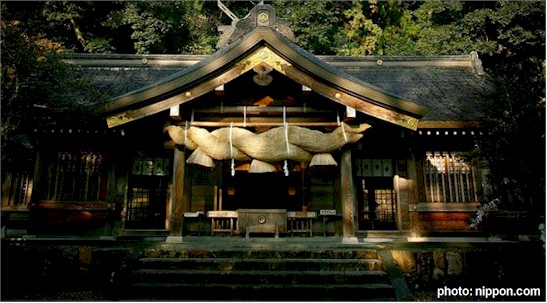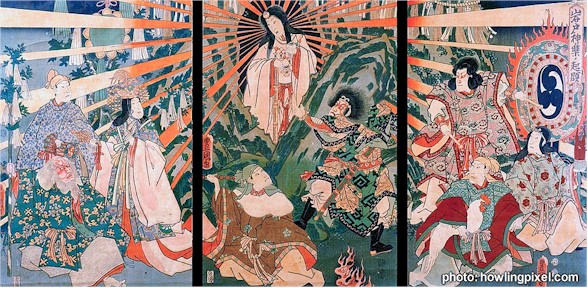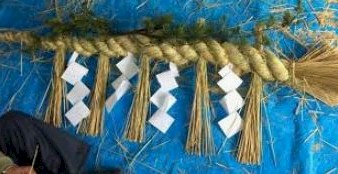
|
|
New Year Traditions
Shimenawa
published Nov 20, 2019
|
New Year is the largest holiday event of the year in most Asian countries, and Japan is no exception. With its lengthy history, and the incorporation of influences from other Asian countries, Okinawa is rich in traditional and cultural customs celebrating the end of one year and the beginning of the next. Holiday decorations can be found in virtually every home and workplace, and traditional celebrations take place in homes, offices and banquet halls.
attached at various places and the twist of the rope is always to the left. Today, Shimenawa have a small sour orange, called a daidai, and a piece of seaweed, called konbu, attached to it. Elaborate shimenawa may have a real or imitation lobster hanging from them. 
In the Shinto religion, the shimenawa represents purity and it is hung above Shinto shrines to ward off evil thoughts and spirits. Hung above the front door of a home, it is also meant to welcome the kami (a god/spirit) of the new year into one’s home. Hanging a shimenawa on one's house or apartment is also a sign of respect to visitors who are protected from evil as long as they are in the host's home. Their role on automobiles might be taken as a somewhat desperate hope that the drivers of the car will be safe from injury. Shimenawa also encircle shinboku - sacred trees. In Japanese homes, one often sees a shimenawa in front of the household shrine, and it forms the base of the shimekazari, a New Year decoration hung above the front door to welcome the kami of the new year into one’s home. Shimenawa that are suspended across a space are usually thicker in the center and taper toward the ends, while those tied around a sacred object are generally of a consistent thickness. A shimenawa invariably hangs beneath the eaves of the haiden (hall of worship or oratory), and one is frequently affixed to the torii as well, making it one of the first things one sees when visiting a shrine. |

Like most Okinawan traditions, the shimenawa brings with it a legend. According to local lore, the sun goddess, Amaterasu, had been badly mistreated by her brother and had hid herself in a cave. As a result, all of Japan was plunged into darkness. Repeated requests from her subjects to bring light once again into the world were ignored by Amaterasu.

The lesser gods and goddesses decided that the only way to bring Amaterasu out was by trickery and they proceeded to dance and play music, knowing that the sun goddess loved music. Sure enough, she heard the music and became curious. Amaterasu came close to the mouth of the cave to hear better and was pulled outside by one of the strong gods. Another god quickly stretched a rice straw rope across the entrance to the cave. Everyone begged Amaterasu not to go back into the cave again because of the bitter cold that her absence brought. She agreed and ever since then the shimenawa has been used to designate a sacred area, whether it be a shrine, a grove of trees, a particularly interesting rock, a home or anywhere else a kami would dwell.
Sources: |
©2019 Contact: ClickOkinawa.com

